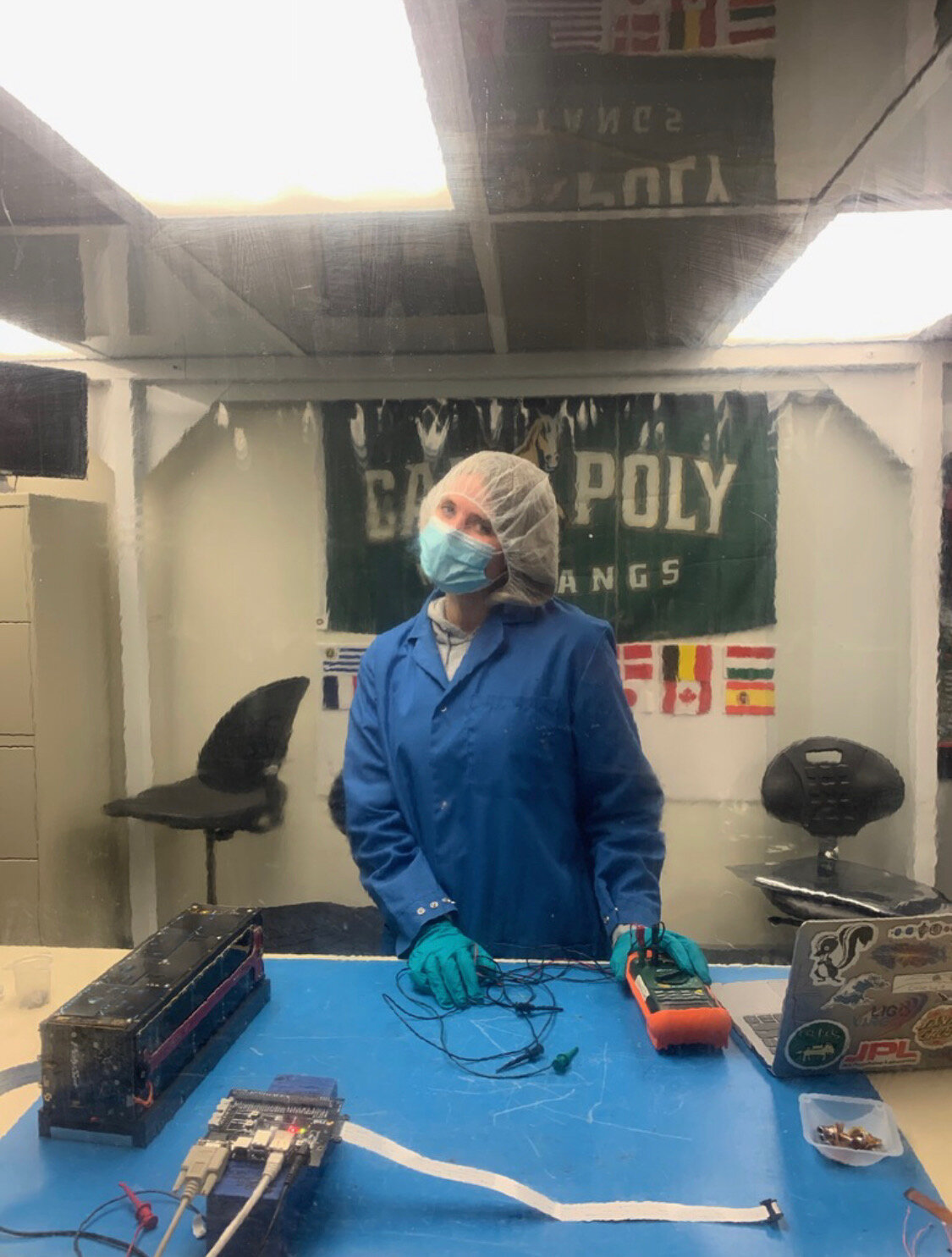Cal Poly’s ExoCube 2 Launching on the Virgin Orbit Launch Demo 2
NICO VINUELA | JANUARY 11, 2021
This isn’t the first time that Cal Poly’s CubeSat Lab, also known as PolySat, has sent a CubeSat (a miniaturized, research-focused satellite) into space. The lab has launched 11 CubeSats, including the first ExoCube mission, which launched in 2015. Here is where ExoCube 2 comes in.
According to ExoCube 2’s current lead, Grace Guarraia, the original ExoCube is “screaming into the space void somewhere.” Because satellite projects can span relatively long timelines, it is common to have more than one lead throughout the life of the project. Guarraia assumed the position in January of 2020, and she’s had a lot on her hands recently as Cal Poly’s second ExoCube prepares for launch.
The ExoCube 2 isn’t exactly a cube; it’s a 3U CubeSat, which roughly resembles a loaf of bread. This miniature satellite is designed to orbit around the Earth in the upper exosphere, which is the highest part of the atmosphere. It carries a spectrometer as its payload, made to analyze particle densities in the exosphere which can, in turn, show how geomagnetic storms affect the atmosphere. This data is then used to improve atmospheric models.
This is an extremely exciting mission for all of the CubeSat Lab; after a highly anticipated wait, the ExoCube 2 project is almost finished. It’s especially exciting for Guarraia, this being her first time assuming the lead role in a project.
Lead Grace Guarraia poses with ExoCube -2 in the Cal Poly CubeSat clean room
Unique difficulties present themselves against any CubeSat project, but the COVID-19 pandemic added layers of obstacles for the team that no one could have foreseen. Guarraia worked remotely from home in Chicago writing procedures for the satellite; she also met virtually with the project’s previous lead, Bailey Whickham, and attended meetings held by NASA’s Launch Service Program (LSP) to talk about the project every two weeks. No one was allowed inside the labs at Cal Poly from March until April when the university was able to evaluate the COVID-19 risks and implement proper safety protocols. This of course caused a temporary delay in the work on the ExoCube 2.
Once the labs became available to the ExoCube 2 team, they safely got back to work. Besides hardware labor, however, all other design work and meetings have continued to be conducted virtually. The ExoCube 2 is a true collaborative effort; student teams that specialized in aerospace engineering, mechanical work, and software all came together to build this innovative satellite, which is unique to Cal Poly’s own CubeSat Lab. In addition to writing and reviewing procedures, Guarraia also coordinated communication between teams and acted as their source of information.
“The respect I have for all my fellow lab members and professors is astronomical,” she said. “It’s just awesome.”
The satellite was integrated to the launch vehicle dispenser on the 13th of October, and is currently scheduled to launch on Virgin Orbit’s Launch Demo 2 mission January 13, 2021.


